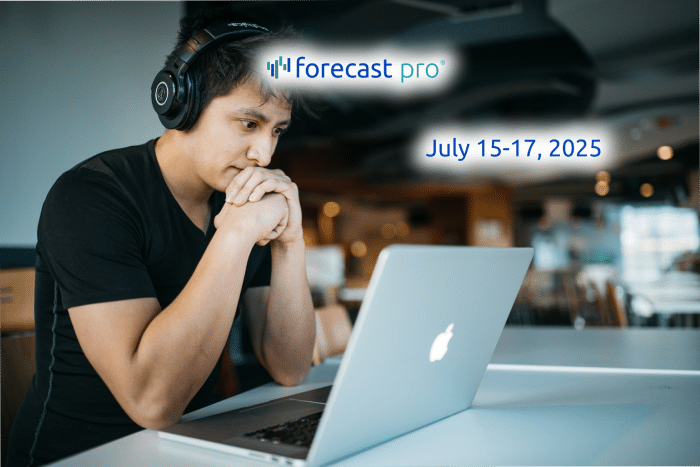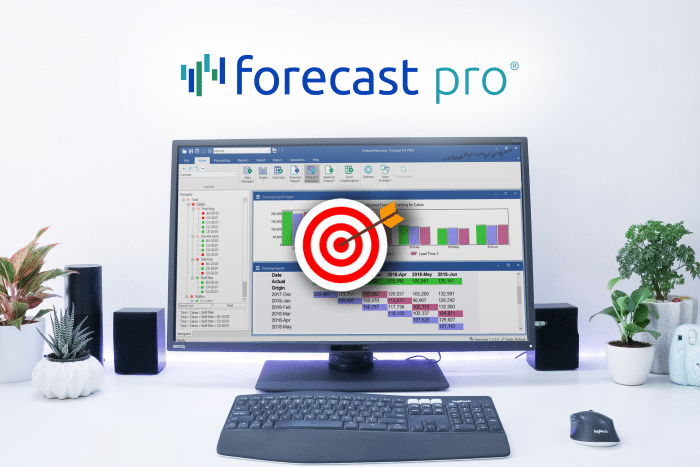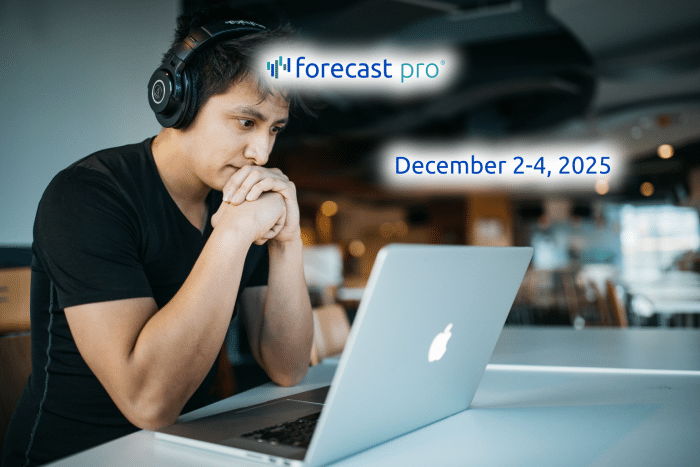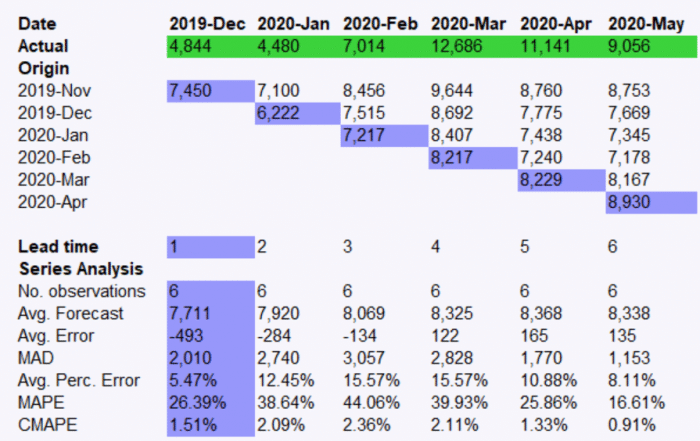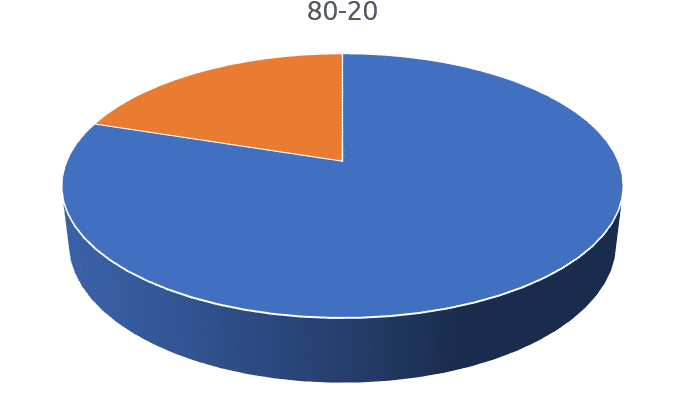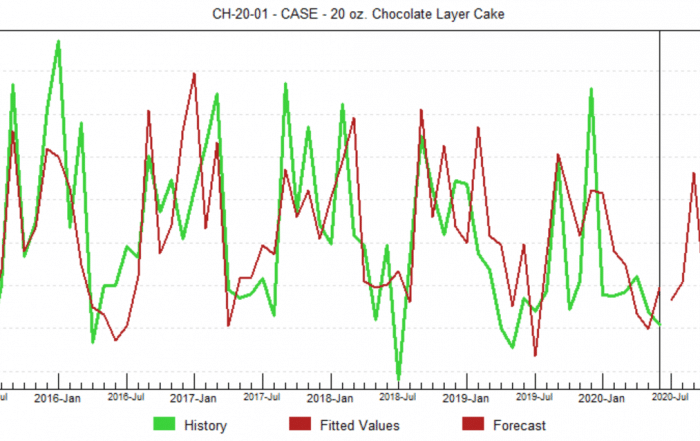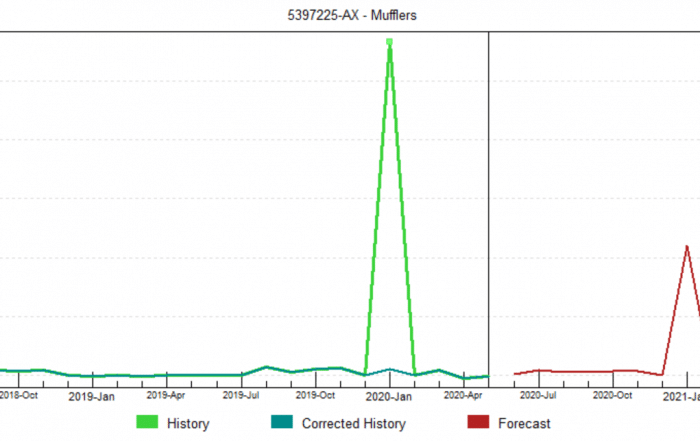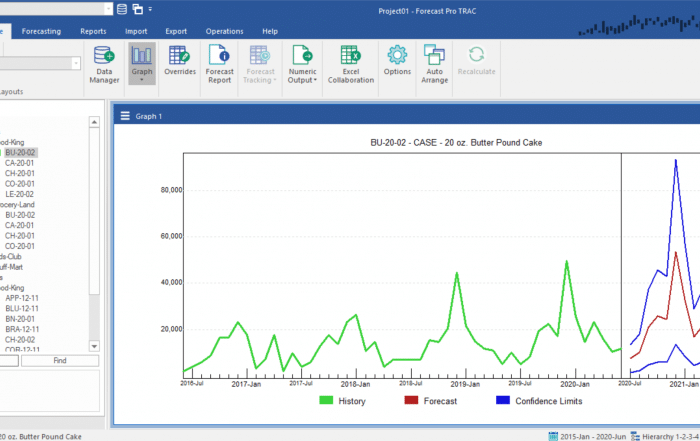Latest News and Posts
Keep your forecasting skills sharp by checking out the articles below.
Upcoming Events
How do I measure forecast accuracy?
Measuring forecast accuracy is critical for benchmarking and continuously improving your forecasting process, but where do we start? This article explores why we should measure accuracy, what we need to track, and the key metrics we need to understand to make sense of the data.
How do I use Statistical Models to Forecast Sales?
There’s no question that judgment can (and probably should!) play a significant role in arriving at your final, consensus forecast–but statistical forecasting can offer a level of automation and insight that can substantially improve your forecast accuracy.
Understanding Pareto (ABC) Analysis
In the 19th century Dr. Wilfredo Pareto, an Italian economist, gave birth to the “80/20 rule” when he observed that 80% of the country’s wealth was held by 20% of the population. Today, many organizations find that the 80/20 rule (or a similar ratio) applies to their products—80% of their revenue comes from 20% of their products. […]
Box-Jenkins Forecasting
Box-Jenkins (ARIMA) is an important forecasting method that can yield highly accurate forecasts for certain types of data. In this installment of Forecasting 101 we’ll examine the pros and cons of Box-Jenkins modeling, provide a conceptual overview of how the technique works and discuss how best to apply it to business data. […]
How to Forecast Data Containing Outliers
An outlier is a data point that falls outside of the expected range of the data (i.e., it is an unusually large or small data point). If you ignore outliers in your data, there is a danger that they can have a significant adverse impact on your forecasts. This article surveys three different approaches to forecasting data containing outliers, discusses [...]
The Anatomy of a Forecast
When you use a statistical model to generate a 12-month forecast, you get more than just twelve numbers. You also get a great deal of information about how the forecast was generated, the model’s fit to the historic data and different measures of expected forecast accuracy. In this article, we dissect and catalogue the different [...]
New Comprehensive Business Forecasting Resource
The newly-published reference book Business Forecasting: Practical Problems and Solutions compiles important and influential literature in the field into a single comprehensive resource for improving your forecasting process. […]
What are Time Series Methods and When Should I Use Them?
Time series methods are forecasting techniques that base the forecast solely on the demand history of the item you are forecasting. They work by capturing patterns in the historical data and extrapolating those patterns into the future. Time series methods are appropriate when you can assume a reasonable amount of continuity between the past and the future. They are best [...]
Using Seasonal Simplification to Improve Forecasts
Forecast Pro includes a forecasting approach called seasonal simplification. Seasonal simplification is an extension of exponential smoothing which “simplifies” the modeling of the seasonal pattern by reducing the number of indices used. In many cases the seasonally simplified model can substantially improve forecast accuracy. […]


